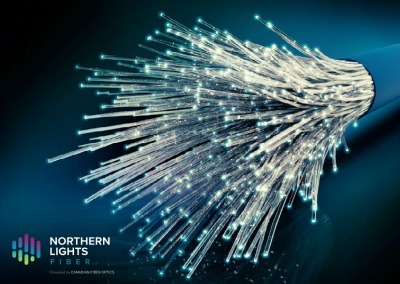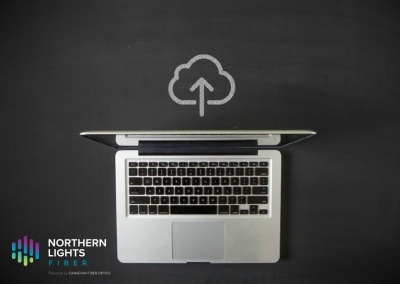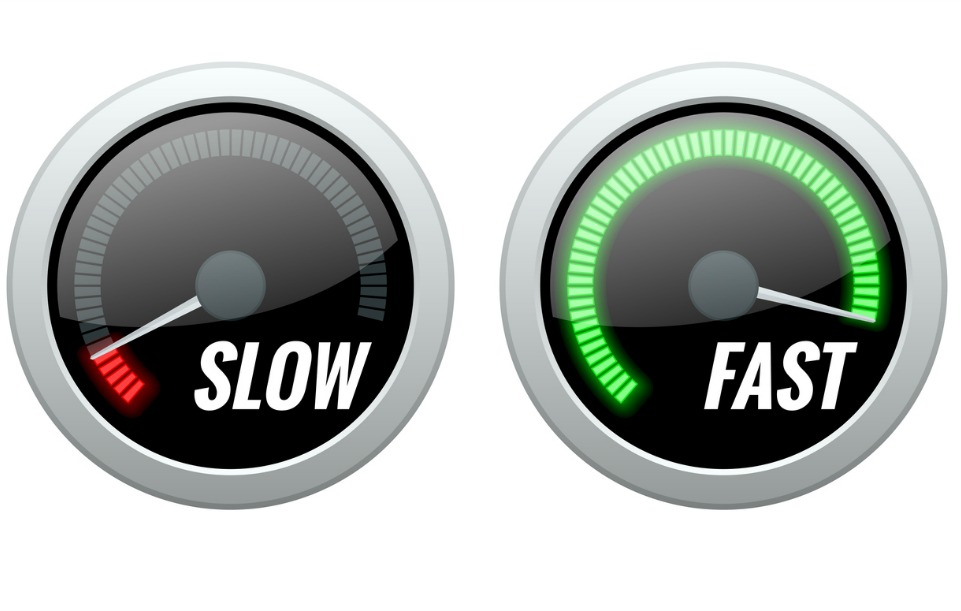Jun 5, 2021 | Construction Updates, Why Fiber Optics?
What To Expect
Northern Lights Fiber is excited to bring you fiber optic internet, with speeds up to 10,000 Mbps (10 Gigabit symmetrical service!). To future proof your community, these types of speeds and reliability is an absolutely necessity. But it would not be possible with the infrastructure that exists today.
To prepare your community for the future, new fiber-optic infrastructure will be required and we will burry this infrastructure.
If you want to buy service now, check out our world-class products and services HERE!
Main-Line
The first part of our construction is called “middle-mile” or “main-line” construction. You will see large equipment of ours, including “hydrovacs”, directional drills, dump trucks, front end loaders, skid steers, and even vibratory plows. Our design in Grande Cache dictates that we will be digging in public easement, and most of our design, in the area, will be in back lanes.
There are some places that this is not possible. There may be a few places where our design determines that we will use front lot easement. This means we will have to dig along the curb of your front yard.
The Drop
Having fiber infrastructure will future proof your home for generations to come. And while cities already have this infrastructure, it is very rare for rural communities in Canada.
If you sign up for services during this process, we will also need to burry new infrastructure to your house. We call this “the drop.” We will also install a small box on the side of your house.
Can I get fiber to my house, even if I don’t want internet?
Yes! We want to future proof your community, and that includes building to as many houses as possible. You can sign an access agreement HERE, and pay a small fee to future proof your house (and very likely increase the property value)!
This will not only be good for your household and local businesses in Grande Cache, but real estate studies strongly suggest the increase of property value when having this infrastructure to your rural home. In other words, many people now want to move to a quieter community but cannot sacrifice internet speed to do so. Now, Grande Cache will be able to attract them!
What About My Property?
This is a big private investment to futureproof Grande Cache, and it requires heavy duty construction. We will try to be as respectful as possible to everyone’s property and we will restore all landscaping to the best of our ability, properly backfilling, and replanting grass.
We have invested in specialized machinery to get this job done fast and as discreet as possible, especially when we leave public easement to get to your house. If you have any questions about our proposed route, please call us at 1-888-CFO-2947 (ext 1) or email at info@CanadianFiberOptics.ca
All services such as electric, water, and other utilities are professionally located to prevent damage. If you are aware of any private underground utilities (like underground sprinklers), please let us know at onecall@CanadianFiberOptics.ca
How Long Will it Take?
Main-line construction in Grande Cache will take most of the year, and it’s possible that it carries through to 2022. That said, we should only be on each street for about a week at a time. Burying the drop to each house will only take about half a day.
What if I Have Questions?
Please call us at 1-888-CFO-2947 (ext 1) or email us at info@CanadianFiberOptics.ca.
How do I future proof my house and get internet that is 100% fiber?
Visit our Products and Pricing page or Sign-Up page! Or give us a call at 1-888-CFO-2947 (ext 2 , for Sales)

May 6, 2021 | Why Fiber Optics?, WI FI
Most of us understand the basics of the internet – just enough to log onto Wi-Fi and maybe turn the router on and off when it starts to malfunction.
However, are you familiar with the terms ‘bandwidth’ and ‘latency’? If you’re not, that’s okay – you’re not alone! Both terms are related to your internet’s ability to send and receive data, but despite their similarities, they refer to two very different concepts. So what’s the difference between them, and why should they matter to you?
Bandwidth
Bandwidth is a word that is thrown around a lot when discussing internet function. Many people assume it just means ‘internet speed,’ but that’s not exactly true. Bandwidth is essentially how much data can move from network point A to point B in a given amount of time.
Think of your bandwidth as a high-speed motorway with, say, three lanes. When an average number of cars are on the highway, everything is going smoothly, and the cars are moving at a good clip. But when it’s rush hour—that is, you’re trying to download something with more data than your bandwidth can handle—the highway gets congested. The traffic bottlenecks then slows to a crawl.
Latency
On the other hand, latency refers to the amount of time it takes for the signal to get from point A to point B and then travel back again. The lower the latency, the better your internet will be because it means there’s less time between when you take your action and when you see the result.
For instance, think about when you do a Google search. You enter your query into the taskbar, click ‘enter,’ and then you wait. If you have low latency, the search engine will return your answer within milliseconds. But if you have higher latency, you might end up waiting a few seconds – or even longer – while the internet retrieves your data. The ‘ping’ you sent is traveling, and you have to wait until it reaches the server, collects what you need, and makes its way back to you.
How Bandwidth and Latency Affect You
Both bandwidth and latency can affect the speed of your internet but in different ways. If you’re a gamer, you’re likely already familiar with ‘lag,’ which is when you perform an action, but it takes a few moments for that entry to manifest in the game. This is a latency issue, as most of the assets you need to game are already loaded onto your computer, and therefore very little bandwidth is needed. Conversely, if you’re trying to stream a show online, but it keeps buffering or appears infuriatingly grainy and broken, that’s likely an example of low bandwidth. All that content has to squeeze its way down the digital superhighway. Unfortunately, both bandwidth and latency issues can be a result of subpar high-speed internet. If you want the best internet experience available, you’ll want to invest in a good fiber connection from Canadian Fiber Optics and Northern Lights Fiber today!
Click HERE to sign-up for services NOW!

Nov 15, 2019 | Why Fiber Optics?, WI FI
Not all internet options are created equal. All it takes is one missed virtual meeting or one lagging video game to realize that your current internet speeds may not be sufficient. If you aren’t happy with your current speeds, you may want to look into other options. But which service is best for you? Let’s explore the speed, reliability, and bandwidth of the three major service delivery options—landline telephone line (DSL), cable TV line (cable), and fiber-optic line (fiber)—to understand why fiber is the clear choice for today’s citizens of the internet.
Internet Speed
Fiber-optic broadband, which uses glass, offers faster internet speeds over greater distances than its copper-based competitors such as DSL and cable. “Fiber to the Home” (FTTH) internet service providers (ISP) boast gigabit-level speeds up into the 100–1,000 Mbps range—several times faster than the maximum offered by its counterparts. Comparatively, DSL speeds max out at about 45 Mbps, while cable hits top speed at 300 Mbps. While that may sound like more than you’ll ever need, the capacity and speed of cable and DSL fluctuate during times of demand, which can leave you lagging when you have a pressing deadline or virtual meeting to attend.
Internet Reliability
Simply put, if reliability is important to you, choose fiber. DSL and cable experience significant slowdowns during peak hours and during extreme weather conditions such as drastic temperature changes and flooding. Fiber alone withstands all of these conditions, including the heave usage of peak hours. Keep in mind that unplanned downtime adds a serious cost to both your productivity and bottom line.
Internet Usage
Don’t make the mistake of underestimating your internet usage. The reality of technology advancements is that most of us are now high-capacity users. How many desktops, laptops, tablets, phones, and gaming systems are competing for bandwidth in your home? Do you stream Netflix or Hulu or videos on YouTube? Do you play video games or games on your phone? Do you have a security system or a video doorbell monitor that requires internet connection to function? What about a home assistant device? Even smart appliances like washers, dryers, and refrigerators usually need an internet connection. As we get more connected, a lightning-fast internet connection becomes increasingly important.
Ready to make the switch to fiber? Contact Northern Lights Fiber today at 888-CFO-2947 today! Or order online now!

Nov 15, 2019 | Why Fiber Optics?, WI FI
The future of the internet is sharing―from capturing Instagram-worthy meals to enjoying video chats with friends―and PRTC’s unmatched upload speeds make that future a reality.
Here are a just few ways PRTC’s fast, reliable upload speeds make your life easier:
Video chat and live sharing
Skype, FaceTime, and other video messaging services all require robust upstream connections to ensure clear audiovisual quality and to prevent freezing and blackouts. Sharing big news on Facebook or Instagram Live also works better with greater upload speed.
Working or going to school from home
You need a robust upstream connection to interact with colleagues during video conferences, collaborate on team projects, and share important files. Online studies also can tax your upstream connection, especially if you join a virtual classroom or share large portfolios.
Keeping family, friends, and followers in the loop
Upload new videos to YouTube or share photographs with Flickr faster with a better upstream connection.
Faster data backups and online file synching
If you back up your data with a service like Backblaze or Carbonite, you need upload speed that meets basic requirements to ensure your data is protected quickly and without glitches. File and photo synching services like Dropbox, Google Photos, and Microsoft OneDrive all require a minimum of 5 Mbps upload speed to operate properly, and the more upload capacity available, the faster these services can sync and share files.
Online gaming, remote security and much more…
From online gaming to connected security systems that send real-time images through an internet connection, a fast upload connection is key to ensuring all your interactive online activities function well.

Nov 15, 2019 | Why Fiber Optics?, WI FI
Testing the speed of your internet connection is easy, but it’s also easy to misunderstand the results. Your devices — TVs, routers, smartphones, laptops, desktops, etc. — have different capabilities, and you can get different results on each one, even while using the same internet connection.
This is particularly noticeable to users taking advantage of higher speed packages offered by Northern Lights Fiber (Powered by Canadian Fiber Optics)
Here are a few things to keep in mind when evaluating your speed test results:
HARD-WIRED VS. WIRELESS
That old-school cord-and-plug is simply more reliable than WiFi (wireless) connectivity. Even those super-fast 1 Gbps connections, now widely available across the country, won’t test out at higher than 500 to 700 Mbps when tested over WiFi. For the most accurate speed test result you must test with a hard-wired device.
Why? Because there are nearly endless variables that can negatively affect a WiFi signal, everything from nearby construction or the wireless printer in the home office to a baby monitor or microwave in use in the home.
Keep in mind that one limitation with a hard-wired connection is testing with a device that has a 100 Mbps NIC (Network Interface Card). This can cause you to consistently receive speed test results at 90-98 Mbps. Northern Lights Fiber recommends testing on a device that has a 1 Gbps NIC.
POSSIBLE PROBLEMS AFFECTING SPEED AND SPEED TESTS
Slow internet speeds are sometimes caused by malware such as adware and viruses. There are several free and inexpensive programs and apps to deal with that, and they’re important to use for many reasons.
This also sounds obvious, but it’s very easy to overlook any ongoing downloads or programs like video chat that may be turned on while you’re conducting a speed test on your device. Close these applications, reboot your device, and test again.
Even the browser you use — Chrome, Firefox, Safari, Microsoft’s new Edge, etc. — can affect your test speed. Try different browsers to see if that’s the case on your system.
If you have a WiFi extender, make sure you turn it off before you run a speed test. Otherwise, your computer may test the wrong connection.
This brings us to a final point about equipment. Technology advances constantly, and many older routers and computers simply cannot take full advantage of the blazing speed and bandwidth of today’s fiber broadband connectivity.
When you’re ready to upgrade your technology, make sure your new equipment has the network cards and internal processing power that can leverage the speed of market-leading fiber broadband like that from Northern Lights Fiber (Powered by Canadian Fiber Optics).




